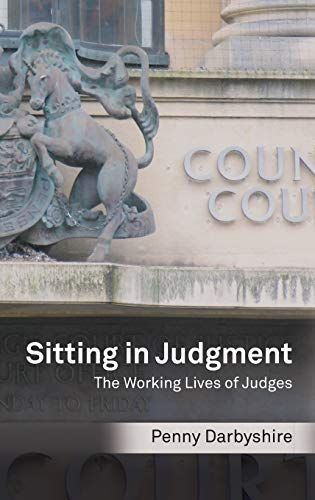
Sitting in Judgment The Working Lives of Judges
The public image of judges has been stuck in a time warp; they are invariably depicted in the media - and derided in public bars up and down the country - as 'privately educated Oxbridge types', usually 'out-of-touch', and more often than not as 'old men'. These and other stereotypes - the judge as a pervert, the judge as a right-wing monster - have dogged the judiciary long since any of them ceased to have any basis in fact. Indeed the limited research that was permitted in the 1960s and 1970s tended to reinforce several of these stereotypes. Moreover, occasional high profile incidents in the courts, elaborated with the help of satirists such as 'Private Eye' and 'Monty Python', have ensured that the 'old white Tory judge' caricature not only survives but has come to be viewed as incontestable. Since the late 1980s the judiciary has changed, largely as a result of the introduction of training and new and more transparent methods of recruitment and appointment. But how much has it changed, and what are the courts like after decades of judicial reform? Given unprecedented access to the whole range of courts - from magistrates' courts to the Supreme Court - Penny Darbyshire spent seven years researching the judges, accompanying them in their daily work, listening to their conversations, observing their handling of cases and the people who come before them, and asking them frank and searching questions about their lives, careers and ambitions. What emerges is without doubt the most revealing and compelling picture of the modern judiciary in England and Wales ever seen. From it we learn that not only do the old stereotypes not hold, but that modern 'baby boomer' judges are more representative of the people they serve and that the reforms are working. But this new book also gives an unvarnished glimpse of the modern courtroom which shows a legal system under stress, lacking resources but facing an ever-increasing caseload. This book will be essential reading for anyone wishing to know about the experience of modern judging, the education, training and professional lives of judges, and the current state of the courts and judiciary in England and Wales.